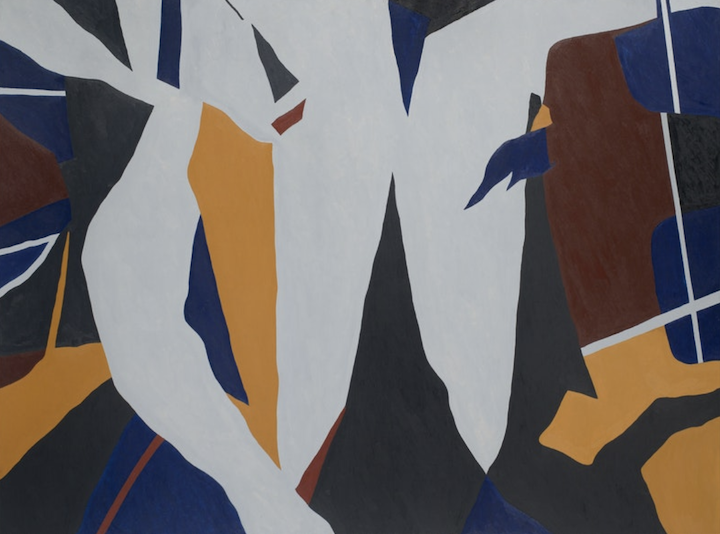Ralston Crawford: Torn Signs April 2019

Featuring works from the Vilcek Foundation’s American Modernism Collection, alongside loans from John Crawford, one of the artist’s sons, Ralston Crawford: Torn Signs presents an important but lesser known aspect of the modernist painter’s oeuvre. The catalogue also features reproductions of pages from Crawford’s sketchbooks from 1971, providing insight into the artist’s visual memory, and his thoughts on color, the connection between drawing and writing, and his own life and death.
In addition to reproductions of drawings, paintings, and photographs from the two series, the catalogue features essays by Vilcek Foundation President Rick Kinsel on the influence of Crawford’s travels to Europe; art historian and professor William C. Agee on the artist’s life and reaction to the historical events of the 20th century; sculptor John Crawford, on the relationship between the two series and the role of photography in their development; and Vilcek Foundation Curator Emily Schuchardt Navratil, on the genesis and context of individual works in each series.
From the outset, Crawford’s Torn Signs photographs were very different from the Precisionist paintings that made his name and reputation. Whereas Precisionism is associated with a colorful and life-affirming view of progress, modernity, and the industrial future, the first Torn Signs images are black-and-white studies suggestive of disillusionment, dissolution, and urban decay. The majority of the series (which would ultimately include more than seventy works) dates from the years after World War II, when Crawford was traveling a good deal – to New Orleans and Mexico, and then throughout Europe. These travels followed hard on a period of disillusionment with the technology and industrial process that had been so central to Crawford’s Precisionist works, a disenchantment born of the extraordinary death and destruction that he had experienced not only in World War II, but also in its aftermath as the United States continued to test atomic weaponry at Bikini Atoll (which Crawford had personally witnessed). The New Orleans and Mexico trips seem to have brought him closer to an awareness of the human spirit and its frailty, with his photographs and other artworks of New Orleans being particularly resonant in that regard. Crawford’s interest in jazz culture also brought him into contact with street life in New Orleans, and with that contact came an awareness of the potential for finding beauty in imperfection, detritus, and decay. The soulfulness of New Orleans would bring him back to that city again and again throughout his life.
Ralston Crawford: Torn Signs at the Vilcek Foundation in 2019
Ralston Crawford: Torn Signs catalogue, published by Merrell Publishers
Ralston Crawford (b. 1906), Torn Signs, c. 1974-1976, Oil on canvas, H- 54 x W- 72 in. (137.2 x 183 cm)

Rick’s Involvement: Producer and writer.

